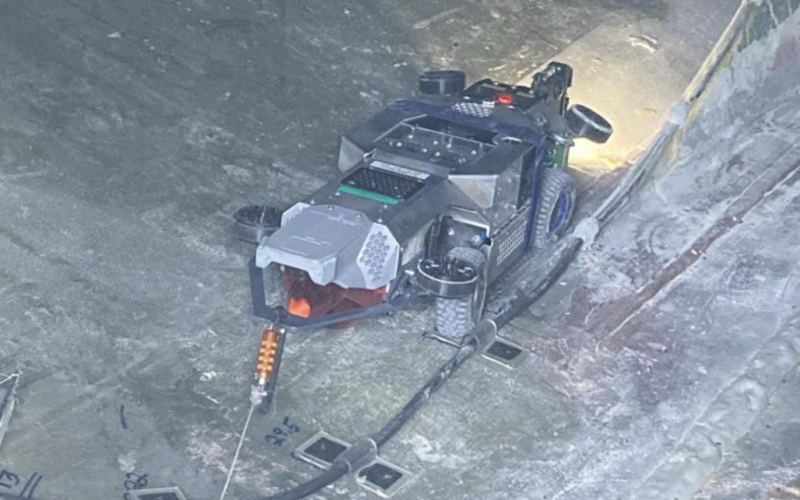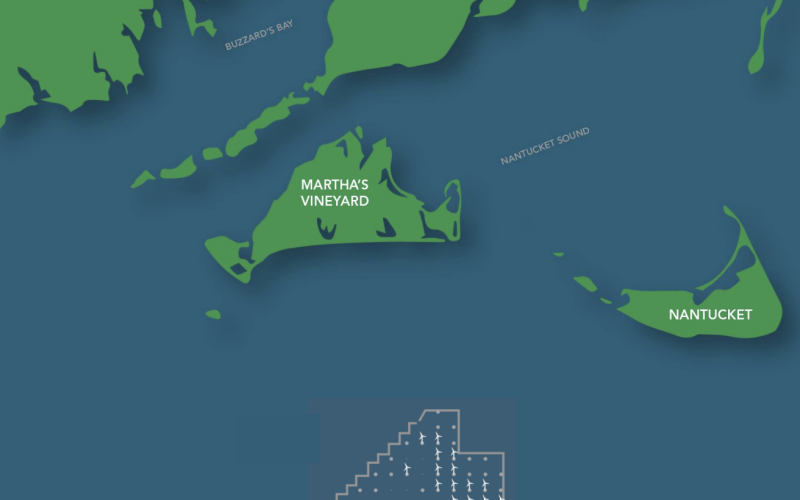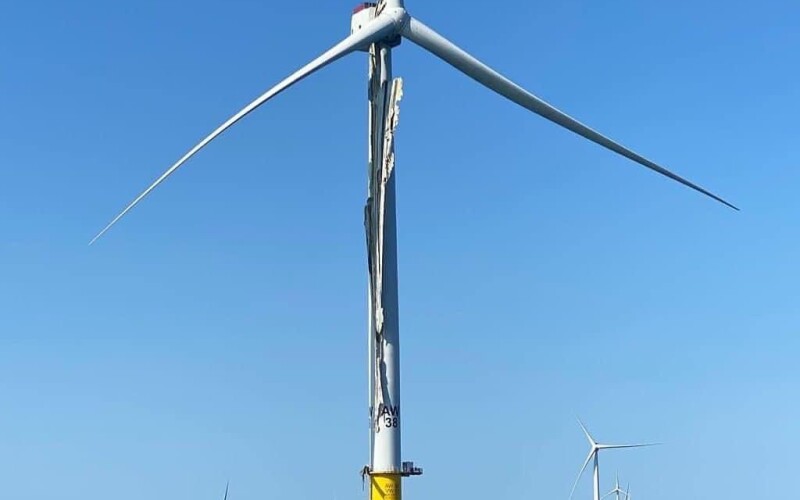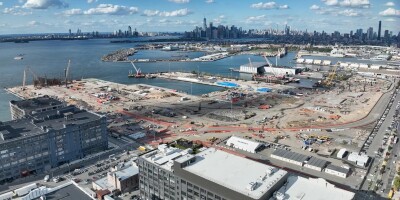Some remaining pieces of the damaged turbine blade on a Vineyard Wind turbine dropped off early Aug. 11, as project developers and turbine manufacturer GE Vernova continue dealing with the July 13 failure that has shut down the project.
“The controlled detachment follows a series of exercises conducted late last week to pitch the blade, which, in combination with storm winds, led to the safe separation of the sections below the root of the blade,” according to a Sunday evening statement from Nantucket, Mass., municipal officials.
On Aug. 9 Vineyard Wind and GE Vernova issued a detailed overview of their “action plan designed to safely remove the remainder of the damaged blade on turbine AW-38, continue collecting any debris, and resume turbine installation and operations of the Vineyard Wind 1 project.”
The companies said the plan was developed in consultation with the Coast Guard and federal Bureau of Safety and Environmental Enforcement, which ordered a suspension of most construction work on the 806-megawatt project following the blade failure.
Fiberglass and foam debris from the breakup of the blade has shown up on Nantucket, Cape Cod and Buzzards Bay beaches during the height of the New England summer tourism season, with more debris reported by fishermen offshore.
The accident at a flagship U.S. wind project and its ongoing cleanup provided plenty of ammunition to opponents of offshore wind projects.
"The Nantucket environmental disaster should serve as a wake-up call to anyone still considering offshore wind as a viable option for our shores," said Rep. Jeff Van Drew, R-NJ, who is opposing offshore wind plans for New Jersey. "We are watching in real-time the devastating toll of offshore wind and how it will affect our communities.”
GE Vernova blamed a manufacturing defect as the primary cause of the blade failure, and an analysis of the breakage and inspection of other turbine blades are key to the companies’ response.

“Vineyard Wind is a critically important project for the region’s energy future, and delivering this project safely is our highest priority,” said Vineyard Wind CEO Klaus S. Møller in the Aug. 9 statement. “We believe we have the right plan in place to recover the rest of the blade, secure any debris offshore and onshore, and safely and responsibly resume the installation program so we can put this project back on track to deliver needed clean power to the New England region.”
“Our top imperative as a company is to work with our stakeholders on addressing the impacts of this blade event with thoroughness and urgency,” said GE Vernova Chief Sustainability Officer Roger Martella. “With safety first and foremost in our actions, our focus is on removing the remaining blade, assessing environmental and marine impacts, and executing a strong, three-point plan for blade performance so the project can succeed on its goals of providing sustainable, affordable, and reliable energy and jobs to New England,” said GE Vernova’s chief sustainability officer Roger Martella.
The companies say the blade removal operation, developed with salvage company Resolve Marine, includes four major tasks: “rotating the blade to reduce hanging blade and possible controlled cutting; removing the root of the blade from the hub; removing fallen debris from the platform; and addressing seabed debris.”
Meanwhile GE Vernova’s root cause analysis is centered on a “manufacturing deviation…which should have been identified through the quality assurance process at the blade manufacturing facility.”
Before restarting power production, new analyses and inspections are required for the 24 installed Vineyard Wind turbines:
A new review of ultrasound images, reprocessing over 8,300 testing records “to determine whether bond requirements are satisfied. Any issues identified will be further inspected and corrective action taken as necessary.”
Internal visual inspection: Advanced remote-controlled wheeled drones, or “crawlers,” will be inserted into turbine blades for visual inspections. The crawlers carry video cameras to capture images for technicians to examine critical blade parts and flag any anomalies for further review before putting generators back in service.
Ongoing real-time monitoring with new technology: GE Vernova says it is “deploying a new algorithm, using existing sensors already in the blade, and monitoring blade health to avoid similar events. The algorithm will provide advanced warnings or automatic, safe turbine shutdown when required.”
Vineyard Wind says its plan is “ultimately to resume safe turbine installation and restart operations. No blades will be installed or used in operations until thoroughly inspected.”






